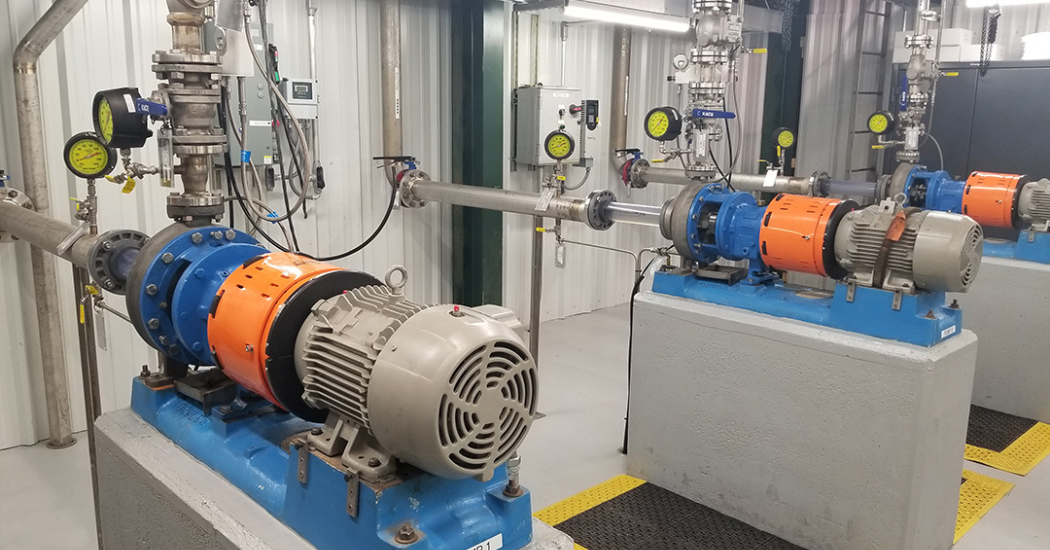Centrifugal pumps, like any mechanical equipment, can fail for several reasons. Understanding the primary causes of failure, recognizing the symptoms, and knowing how to catch these issues before they lead to failure can help maintain the efficiency and reliability of the pump. Here are some common causes of failure, their symptoms, and preventive measures:
1. Cavitation
Causes:
- Insufficient Net Positive Suction Head (NPSH)
- High fluid temperatures
- Excessive pump speed
Symptoms:
- Noise (sounds like marbles or gravel in the pump)
- Vibration
- Pitting damage on the impeller and other internal components
Prevention:
- Ensure adequate NPSH by maintaining proper suction conditions
- Lower pump speed if possible
- Reduce fluid temperature
2. Mechanical Seal Failure
Causes:
- Improper installation
- Dry running
- Incompatible materials
- Excessive vibration
Symptoms:
- Visible leakage
- Unusual noises
- Overheating around the seal area
Prevention:
- Ensure proper installation and alignment
- Use appropriate seal materials
- Monitor and maintain correct operating conditions
- Use a seal support system if necessary
3. Bearing Failure
Causes:
- Poor lubrication
- Contamination
- Misalignment
- Excessive loads
Symptoms:
- Unusual noise (grinding or whining)
- Increased vibration
- Overheating of the bearing housing
Prevention:
- Regularly check and maintain lubrication
- Ensure proper installation and alignment
- Use clean and appropriate lubricants
- Monitor load conditions and avoid overloading
4. Impeller Wear or Damage
Causes:
- Erosion from abrasive fluids
- Corrosion from chemical attack
- Cavitation
Symptoms:
- Reduced flow rate
- Decreased discharge pressure
- Vibration and noise
Prevention:
- Use wear-resistant materials for impellers
- Ensure proper NPSH to avoid cavitation
- Regular inspection and maintenance
5. Shaft Misalignment
Causes:
- Improper installation
- Thermal expansion
- Wear of coupling components
Symptoms:
- Vibration
- Noise
- Premature bearing and seal failure
Prevention:
- Ensure correct alignment during installation
- Use proper coupling and alignment tools
- Regularly inspect and adjust alignment
6. Clogging or Blockage
Causes:
- Debris or foreign objects in the pump
- Accumulation of solids in the impeller or volute
Symptoms:
- Reduced flow rate
- Increased power consumption
- Noise and vibration
Prevention:
- Use strainers or filters on the suction line
- Regularly inspect and clean the pump
7. Inadequate Lubrication
Causes:
- Insufficient or inappropriate lubricant
- Contaminated lubricant
- Failure to follow lubrication schedules
Symptoms:
- Noise
- Overheating
- Bearing failure
Prevention:
- Follow recommended lubrication schedules
- Use appropriate and clean lubricants
- Regularly check lubrication levels and quality
Monitoring and Preventive Measures
- Regular Inspections:
- Perform routine visual and manual inspections to check for signs of wear, leaks, and misalignment.
2. Vibration Analysis:
- Use vibration monitoring tools to detect changes in vibration patterns, which can indicate problems.
3. Temperature Monitoring:
- Monitor the bearings, seals, and pump casing temperature to detect overheating.
4. Flow and Pressure Monitoring:
- Continuously monitor the flow rate and discharge pressure to identify performance issues.
Noise Monitoring:
- Listen for unusual noises that can indicate cavitation, bearing issues, or impeller problems.
By implementing these monitoring and preventive measures, you can catch potential issues early and take corrective action to prevent failures in centrifugal pumps, ensuring their reliable and efficient operation.
Learn more about SEPCO.




